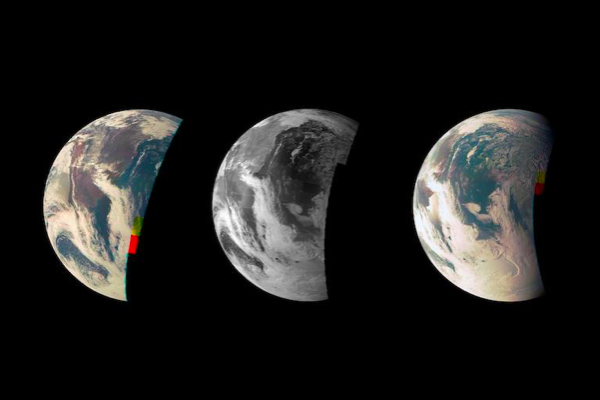
Image via NASA / JPL
Planetary cores aren’t exactly the easiest things to study. However, some recent breakthroughs have seen the likes of Saturn and Mars revealing their once-mysterious compositions.
Now, it just might be the Earth’s turn.
While previously believed to be entirely solid and made of compressed iron alloy, a new study has proposed that the Earth’s inner core may actually be softer, or even include elements similar to liquid metal.
Since it’s virtually impossible for any human or human-made probe to actually reach the center of the Earth, scientists have always had to rely on seismic waves which come from earthquakes. These vibrations allow for a reconstruction of the planet’s inner processes.
Rhett Butler, study co-author and a geophysicist at the Hawai’i Institute of Geophysics and Planetology, recalls the starting point for the study published in the journal Physics of the Earth and Planetary Interiors: numbers that didn’t quite add up.
After large earthquakes, seismic waves had traveled through the Earth’s core from their origin to the exact opposite of the planet. In theory, one type of wave—the undulating shear wave—was supposed to pass through what would’ve been a solid ball of metal. However, Butler saw that they were instead being deflected in some areas.
Since the seismic wave math was confirmed to be correct, it could only mean that one other thing was wrong: the base assumption that the core was solid.
So Butler and his study co-author, Seiji Tsuboi, began working as if the Earth’s core was soft. They found that the waves matched up to the assumption that instead of being the iron alloy ball we always thought it was, the core contained some liquid and “liquid/mush region” near its surface.
But it still seems to retain some solidness, Butler clarifies, saying that it’s still “really hard in some places.” As he explains to Live Science, the core has “hard surfaces right up against melted or mushy iron. So we’re seeing a lot of detail within the inner core that we didn’t see before.” This will have implications for our understanding of the Earth’s magnetic field.
“The more that we look at [the Earth’s core], the more we realize it’s not one boring blob of iron,” Jessica Irving, a seismologist who was not involved in the study, tells Live Science. “We’re finding a whole new hidden world.”
[via Live Science, image via NASA / JPL]
